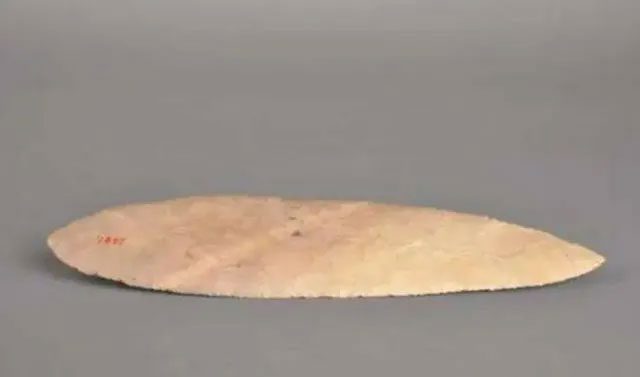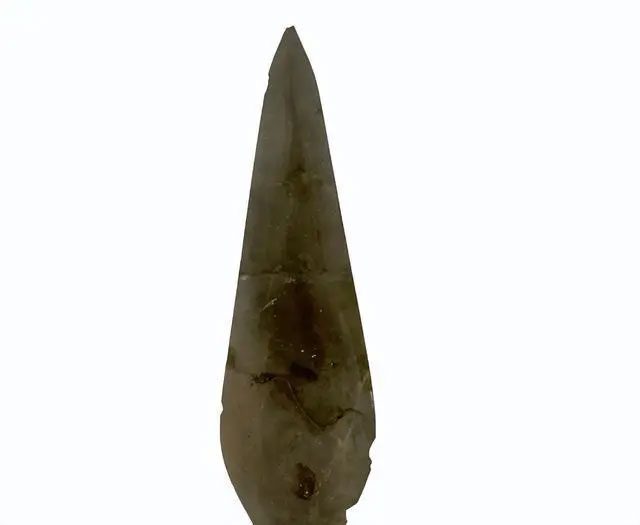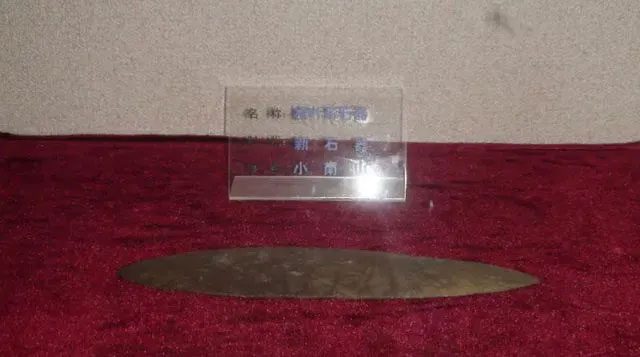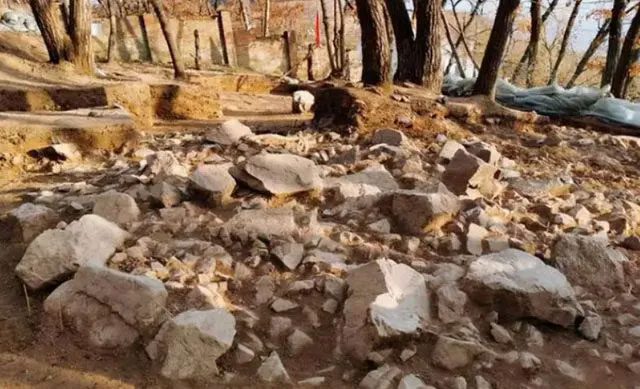Finding an object that seemed ordinary but turned out to be a priceless treasure: A true story from Heilongjiang Province, China.
In 1958, in the district of Rihua, Songyuan City, Heilongjiang Province, due to the difficult living conditions, a middle school student named Chen (referred to as Little Chen) would run up a small mountain near his home every afternoon after school to collect firewood. The young boy understood that by gathering firewood, he could help lighten his parents’ burden in life.
One day, after school, this student again ran up the mountain as usual to search for firewood. Feeling tired, he decided to lie down and rest for a moment. While resting, Little Chen accidentally spotted a strangely shaped leaf, prompting him to quickly get up and pick it up.
However, Little Chen soon discovered that this was not an ordinary leaf. Instead, the peculiar leaf was made of stone and polished. Little Chen was delighted as he had not had many toys since childhood. Afterward, he brought the leaf to show his friends.

Little Chen finds a strange leaf during a trip to gather firewood.
Initially, his friends were also fascinated by this special leaf. However, aside from its smoothness, there was nothing particularly unique about it, leading to their disinterest. Consequently, Little Chen took the leaf home and placed it in his desk drawer.
The Truth About the Leaf Found on the Mountain
By 1965, archaeologists arrived in Heilongjiang, Little Chen’s hometown, to collect cultural relics. The experts visited villages in the province to both disseminate knowledge about cultural artifacts and begin collecting antiques. This sparked Little Chen’s curiosity.
After listening to the experts, Little Chen suddenly remembered the stone leaf he had found years earlier. He hurriedly asked the expert, “Can a stone leaf be considered a cultural relic?“
Upon hearing Little Chen’s description of the leaf, the experts suspected that it might have a significant background. Therefore, they followed Little Chen home to see the leaf.

The leaf that this student found turned out to be a rare treasure.
When Little Chen presented the leaf, the experts observed and determined that the leaf had ancient origins. However, to ascertain its exact history, they needed to conduct thorough research. Consequently, the experts borrowed the leaf from the young boy and took it back to their research institute.
The research results astonished the experts. It turned out that this leaf was a product of the Neolithic period, dating back over 6,000 years. This was considered a very rare cultural relic.

The leaf over 6,000 years old is currently displayed at the Heilongjiang Provincial Museum.
After thoroughly researching its shape and cross-referencing with related historical materials, the experts concluded that this leaf was not an ordinary craft item. It was a priceless treasure with extremely significant historical value.
The experts immediately contacted Little Chen to ask how he found the leaf. Little Chen recounted the process of discovering the leaf.
After learning that the leaf was found on the mountain, the experts promptly visited the mountain near Little Chen’s home and began excavations. As a result, they successfully discovered a graveyard of primitive tribal leaders. The archaeologists collected numerous stone artifacts from this historical site.

The archaeologists excavated at the site where the strange leaf was found and discovered a site with many rare artifacts.
No one expected that just a leaf that Little Chen randomly picked up would lead people to such a valuable historical site. All artifacts found at this site are national treasures.
Thanks to the proactive cooperation of the young man Little Chen, the experts uncovered a historically significant site for research. Consequently, Little Chen received a cash reward of 10 RMB (equivalent to nearly 33,000 VND).
At that time, 10 RMB was a considerable amount of money, making Little Chen very happy and proud for having contributed something meaningful to his country. The leaf he found is currently displayed at the Heilongjiang Provincial Museum.


















































